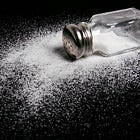UPDATED: May 18, 2025
Welcome to the Healthy Living Is Good Medicine Newsletter, a free publication covering a wide variety of health-related topics, with timely original articles intended to help people lead healthier and more fulfilling lives.
Increasing Health-span
Part 1 of this series covered some of the medical and social interventions that contribute to a healthier lifespan.
A 2025 study suggests that even at age 50, people with unhealthy lifestyles who make substantial changes, accompanied by the appropriate medical interventions for chronic conditions, can significantly increase their life expectancy.
The study analyzed health data from over two million people across 39 countries. It found that the presence at age 50 of all five major risk factors for cardiovascular disease (high blood pressure, high cholesterol, obesity, diabetes, and smoking) can reduce a person’s life expectancy by more than 10 years. Those who received effective treatment for hypertension had the most additional years of life free of cardiovascular disease. Those who ceased smoking in midlife reduced their risk of all-cause mortality.
There are no clinically validated anti-aging dietary interventions shown to be effective for humans. Human life extension by a significant number of years seems improbable, based on lifestyle modifications alone. Please don’t fall for dietary supplements, “natural” treatments, and lifestyle counseling offered by unqualified individuals, all of which are being promoted by a highly profitable wellness industry and unscrupulous “alternative medicine” practitioners:
What we can potentially accomplish through lifestyle interventions is to increase in the number of years spent in relatively good health, often referred to by the nebulous term, “health-span.” At the risk of upsetting people, I will continue to present the medically documented downsides of unhealthy lifestyle habits. Hopefully, that will serve as an incentive for change, although for most people, myself included, change does not come easily.
My articles about healthy living will probably please some of my readers most of the time, and all of my readers some of the time. I don't expect to please all of my readers all of the time, but please bear with me while I lay out the risks versus the benefits. I do so in the hope that you, dear reader, will make wise choices, because we're all in this together.
When people make poor lifestyle decisions and their health suffers as a result, others will have to share the social and economic costs with them. According to a new study, Americans spend more years being unhealthy than people in any other country. The gap between U.S. lifespan and health-span was more than 12 years, the world's largest. There are, however, some very good reasons why you’re not going to get much information about making lifestyle changes when you see your doctor:
It's Both Nature and Nurture
We aren't able to change the genetic hand that we’ve been dealt at birth, but we can play it as well as we can. The genes we've inherited, along with our early childhood environment, may predispose us to certain illnesses, but there are still plenty of opportunities for us to modify their risk factors. The exquisite interactions between our DNA and the environment can produce epigenetic changes that don’t alter our DNA yet are potentially heritable. Epigenetic effects include the regulation of gene expression. For a deeper exploration of the subject, see:
There is now an abundance of evidence showing that smoking, alcohol and drug use, being sedentary, acquiring central adiposity, not getting adequate sleep, experiencing chronic stress and social isolation, and repeated exposure to toxic substances (both deliberate and accidental) can result in chronic illnesses that steal years from our life expectancy. Losing excess fat can pay big health dividends:
A recent study has shown that 40 percent of new cancer cases in the U.S. are linked to potentially modifiable risk factors, including smoking cigarettes or exposure to secondhand smoke, excess bodyweight, alcohol consumption, and eating red and processed meats. Alcohol is a known carcinogen and a major contributor to mortality.
The main, inter-related elements that comprise a healthy lifestyle include a whole-food, plant-predominant dietary pattern; regular physical activity that increases fitness; adequate restorative sleep; effective stress management; avoidance of harmful substances; and having positive social connections. I hope you’ll forgive the redundancy, but I’m trying to drive home a point.
Ideally, healthy aging includes a dynamic balance among the foundational elements for a healthy lifestyle that would be maintained from the time of their inception throughout the remainder of one's life. It is never too late to make health-oriented lifestyle changes and reap their benefits. According to a recent review of healthy aging, preventive measures will still have a net positive effect, even when they are instituted later in life.
Healthy Eating
Everybody eats, so this is a good a place to begin our journey toward better health. Because of my own challenges in maintaining a healthy weight, I’ve taken a personal interest in nutrition, healthy eating, and optimum diets, a subject I've previously explored in detail:
A newly published, 30-year study followed the eating habits of more than 100,000 middle-aged adults. It found that eating comparatively higher amounts of plant-based foods such as fruits, vegetables, legumes, whole grains, and tree nuts, along with oils high in unsaturated fats, was associated with a greater likelihood of healthy aging up to 75 years of age. Diets high in trans-fats, sodium, sugary beverages, and red or processed meats decreased the odds for healthy aging.
I recommend that people learn more about the major components of healthy diets that are good for both humans and our planet. For an in-depth look at the nutritional principles behind a healthy diet, plus how to make preparing healthy meals really easy, and a hundred recipes to inspire your culinary creativity, check out my recently updated eBook: “Rx for Healthy Eating” is available from Barnes & Noble, the Google Play Bookstore, and the Amazon Kindle Store. It costs less than a burger and fries, and won’t clog your arteries.
If you’re new to the world of digital libraries, you don't need a special device to read eBooks. Simply download the appropriate app onto your computer, smartphone, or tablet, download the eBook that you want, and you're good to go. It’s brilliant idea to carry your personal library in your pocket.
You can demonstrate your interest in healthy eating, and show your support for my public service as a health educator, by downloading the book, and sending it as a gifts to others who you care about. It costs less than a burger and fries, but unlike the aforementioned fast food, it could save you from a heart attack. Even if you think you know all about healthy eating, I’m sure you’ll learn something new and valuable from my book.
The World Health Organization (WHO) has recently published a detailed statement about what constitutes a healthy diet. It is also to keep in mind the relationship between what we eat and an increased risk of certain cancers.
Harvard University’s T.H. Chan School of Public Health provides an excellent nutrition resource. In short, eating for health must take priority over eating for pleasure. Because our sense of taste has been hijacked by the food, beverage, and restaurant industries, we need to learn to love eating food that’s actually good for us:
If you value you health, then you would do well to reduce your consumption of the unhealthy trinity; sugar, salt, and saturated fats. That means eating more home-cooked meals, where you can control the ingredients and portion sizes, and limiting your exposure to the tasty but less healthy food provided by restaurants and fast-food joints, as well as heat-and-eat food items.
Another important dietary consideration involves our intake of fats. Monounsaturated fatty acids (MUFAs), such as those found abundantly in extra-virgin olive oil (EVOO) are by far the healthiest. Next come those that are polyunsaturated (PUFAs), and the least healthy are the saturated fats that come from animal sources and tropical seeds such as coconuts. For an outstanding deep dive into this subject, see this article by Dr. Ben Jones.
Protein to Prevent Frailty
Aging may be inevitable, but frailty is not. After age 50, people generally require more protein. Most older people eat smaller amounts of food, don’t get enough high-quality protein, and exercise less. That contributes to sarcopenia and subsequent frailty, due to loss of muscle mass.
The recommended dietary allowance (RDA) for protein is set by U.S. federal agencies as 0.8 grams per kilogram (g/kg) of total body weight, per day. This may be the minimum amount of protein to preserve nitrogen balance, but it is far too low for optimum health. A meta-analysis of data from many studies determined that 1.6 g/kg is the optimal amount of protein per day for improving muscle mass.
Overall, 1.2 g/kg of protein spread out through the day may be enough to prevent loss of lean body mass during weight loss, but 1.6 g/kg/day (or more) may provide additional benefit, particularly for very active adults and for older individuals. However, strengthening exercises are essential for turning protein into muscle and preventing frailty.
The source of protein should be considered as well. Consuming plant protein in midlife (before the age of 60) is associated with higher odds of healthy aging, according to a 2024 study. There’s also the other side of the coin, when too much of a good thing is no longer good for you. Here’s why eating too much protein can become counter-productive:
A Plague of UPFs
Avoid ultra-processed foods (UPFs) like the plague that they are. A recent study found that added sugars accelerate biological aging, among other ill effects. Remember that fiber is your friend, and fructose is your foe. There’s also a lot more to food safety than meets the eye:
Favor plant-based protein sources, such as whole grains combined with legumes, instead of animal-based proteins, most of which are laced with saturated fats that produce deleterious substances when exposed to high heat during cooking. However, there can be downsides to a strict vegetarian diet:
New research is uncovering how diet can directly effect the immune system, and indirectly via the microbiome. Feeding our intestinal symbionts with beans every day might be better than apples for keeping the doctor away:
Eat a broad variety of whole fruits and vegetables. Buy locally grown organic produce when it will significantly reduce your exposure to pesticides and herbicides, or grow your own. We can nourish our gut microbiome with soluble and insoluble dietary fiber and resistant starches:
It is also very important to maintain adequate hydration. Water needs to be our go-to beverage, but finding sources of clean drinking water is becoming more challenging. Water that comes in plastic bottles is certainly not the answer. Fortunately, in most parts of the country municipal water supplies and well water are reasonably safe, but filtration is still recommended:
Health and Physical Activity
Physical activity is defined as movements produced by skeletal muscles that require energy expenditure. Lower levels of activity are associated with higher all-cause mortality. Consequently, every move you make counts. A 2024 study involving nearly a half-million people who were followed for over a dozen years found that those who sat most of the day at work had a 16 percent higher risk for early death.
Generally speaking, the more physical activity people have as a part of their daily lives, the greater their average life expectancy, all other things being equal. There are also brain health benefits, and a recent article explores how regular exercise can have an antidepressant effect.
Human anatomy and physiology is shaped by evolution. We've inherited bodies that enhanced the survival of our prehistoric ancestors. Over that last 12,000 years, drastic changes in the way we live have taken place, with the agricultural domestication of plants and animals, followed by industrialization and urbanization, but our biological software and hardware have not received an evolutionary update.
Our Paleolithic ancestors did not sit in chairs, and our health has suffered from prolonged sitting. According to a recent study, too much sitting is associated with a 34 percent higher mortality risk from cardiovascular disease. Squatting, sitting cross-legged, laying down, and standing upright, are all positions that came naturally for our cave-dwelling forebears. Sitting on chairs and standing in line did not. Chairs weren't invented until people settled in fixed communities, with rulers who sat on thrones.
For those of us with desk jobs, an alternative might be to raise the height of the desk and stand up while working, but it is very important to also keep moving while standing. Shuffling from side to side and doing heel-raises are preferable to standing still. If you absolutely must sit, at least get your feet up, similar to a position our ancestors might have assumed when sitting flat on the ground. Here’s how to minimize the harmful effects of prolonged sitting and/or standing still:
Being physically active and maintaining the basic requirements for physical fitness (strength, endurance, flexibility, balance, and coordination) are essential for healthy aging. That includes the avoidance of frailty due to muscle wasting, and the preservation of one's cognitive abilities. With a sedentary lifestyle, muscle strength declines by 15 percent for each decade after age 50, and losing 30 percent per decade after age 70. Frailty can precipitate a downward spiral, with decreasing strength making it even harder to strength-building exercises.
Resistance exercises can slow or reverse that trend and produce a gain in strength, even when older adults begin a fitness program. Motivation is key, and people will need to exercise like their life depends on it, which it literally does. Here’s a complete set of strengthening exercises to increase insulin sensitivity, improve metabolic health, and prevent muscle loss and frailty:
Heel raises
Squats or lunges
Bodyweight hip thrusts
Pushups or bench presses
Horizontal pulls or rowing machine
Overhead (military) presses
Chin-ups or overhead pull-downs
Sit-ups
Aerobic endurance exercises, strength-building resistance exercises, and flexibility exercises are all important for optimum health. Exercises that also promote balance and coordination contribute to all-around physical fitness. There are numerous studies that make a convincing case for physical activity being crucial for people's physical and mental health. According to Dr. Euan Ashley, Chairman of Stanford's Department of Medicine, exercise may be "the single most potent medical intervention ever known."
Blood glucose levels tend to peak within 90 minutes of eating. A brief exercise routine after each meal can do wonders for one’s insulin sensitivity, thereby reducing the risk of type 2 diabetes. Shortly after each meal, stand up, do 20 heel-raises (rising up on your tip-toes), and 10 full squats to a 90 degree angle between upper and lower leg, if you are physically capable. More repetitions would be even better.
The idea behind this easy exercise routine is to encourage glucose take-up by the large muscles in your legs to help blunt post-prandial blood glucose spikes. Even while sitting, you can do an exercise called “soleus muscle push-ups.” Every little bit of physical activity helps to improve our health.
Results from a randomized, controlled trial indicate that the optimal time for doing strengthening exercises to minimize blood sugar spikes is 30 minutes after beginning a meal. Light walking immediately following a meal also improved glycemic control. Delaying activity for one hour following the commencement of eating resulted in no glycemic control benefits. The take-away is that for blood sugar control, don't sit around after eating. Instead, engage in some physical activities after every meal. Think of it as having an exercise dessert.
A 2024 review found that moderate-intensity exercise initiated shortly after meals may substantially improve glucose response in both healthy individuals and those with type 2 diabetes. Considering how many people currently have undiagnosed pre-diabetes, this could be a recommendation suitable for most adults: About 15 minutes before an individual's glycemic peak, which usually occurs 15-30 minutes after the start of a meal, engage in at least 15 minutes of light- to moderate-intensity physical activity. Aerobic, resistance, and combined exercises are similarly effective, and the activity need not be continuous.
Physical activity following a meal confers an additional benefit by increasing intestinal mobility. Exercise can play a significant role in promoting regular bowel movements, since one of the key factors predisposing to constipation is inactivity. Keep in mind that high-intensity activities that divert blood away from the intestines should not be undertaken until an hour has passed after finishing a normal size meal.
Results of a 20-year cohort study of over 45,000 subjects 50 years of age and older, who were free of major chronic diseases at the start of the study, suggest that each additional two hours of daily TV-watching is associated with a 12 percent reduction in the likelihood of healthy aging. In that study, healthy aging was defined as survival to at least 70 years of age, with no major chronic diseases and no impairment in subjective memory, physical function, or mental health.
Light physical activity, such as leisurely walks, when done on a regular basis, resulted in an increase of six percent in the probability for healthy aging with each additional two hours of activity. A 2024 systematic review and meta-analysis of 33 observational studies suggests that a daily step count of 7,000 or higher is associated with a lower risk of depression. Increased amounts of physical activity may be particularly important for older adults and people with more sedentary activities of daily living.
An extra hour of moderate to vigorous physical activity, such as brisk walking, was associated with a 14 percent increase. This means that even small, incremental changes in one's physical activity level can be beneficial. A recent meta-analysis found that people who have pets tend to be more physically active, but found no significant mental health benefits, as popularly assumed.
To increase the health impact of daily walks, either outdoors or on a treadmill at home or in a gym, pick up the overall pace and maintain it for at least 30 minutes. Playing music while walking, and synchronizing your steps to music that has a tempo of at least 100 beats per minute, can help to speed up your walking. You can also augment your typical pace with short bursts of speed-walking or jogging.
If you're walking with a dog, please be the alpha and set the pace for the dog to follow. If you dawdle or make frequent stops so your dog can check their pee-mail, you'll be depriving yourself of the health benefits of a brisk, uninterrupted pace. While any physical activity is still better than none at all, why not maximize the benefits of walking during the time that you've allotted for it?
Carrying some weights in a backpack while walking can help to increase bone density in the spine, hips, and legs. Walking uphill will provide more of a workout for your cardiovascular system, while walking downhill will increase muscle strength in your legs. The overall benefits of walking in hilly terrain will be that much greater, so seek it out. If knee and hip problems make walking difficult, see if a stationary exercise bicycle will work for you. For more information, see my Blog Post titled “Benefits of Physical Activity.”
The main thing is to keep moving as you age, and think of exercise as your “wonder drug.” The best time of day to exercise is any time that you can. Five to six days of endurance and flexibility exercises, and two to three days of strengthening exercises each week, will have a cumulative effect. The estimated payback in terms of longevity is five times the amount of time invested in moderately intense activity. So, if you can, just do it, but if you have any reservations, check with your doctor first.
Healthy Mental Activity
Keeping mentally engaged and active can help to maintain cognitive functions involved in thinking, learning, and remembering. A variety of mental activities can help maintain and even improve cognitive function as we age. Examples include acquiring new skills, such as learning a new language, playing a musical instrument, or taking up a new hobby. Solving puzzles and playing mentally challenging games may help, but there is little evidence that brain-training apps are effective. Engaging in regular social activities can also enhance cognitive function.
Healthy Sleeping
It is well known that good sleep quality enhances both behavioral and cognitive performance. An experimental study found that NREM sleep, such as occurs during brief naps, can contribute to this beneficial effect via synchronizing circuits in the brain’s cerebral cortex. So, nodding off is actually a good thing, except of course while driving, or when your spouse is talking to you. During this shallow phase of sleep the brain is “recharging” itself and encoding new information.
Older adults tend to spend less time in deep REM sleep associated with dreaming. This deficit correlates with impaired motor skill learning. They also get less stage 3, slow-wave, non-REM sleep, which is thought to impede memory consolidation. This third stage in our 90-minute sleep cycle lasts 20–40 minutes and is the most restful. A recent study found that people over age 60 are 27 percent more likely to develop dementia if they lose just one percent of their slow-wave sleep over the course of a year.
Older people are also more susceptible to breathing disturbances such as obstructive sleep apnea, which can result in decreased brain oxygenation. That can further interfere with sleep quality and facilitate amyloid deposition associated with Alzheimer's disease. Anything that reduces blood flow to the brain, such as narrowing of the arteries, is a risk factor for dementia.
Better sleep habits can improve sleep quality. Changing from sleeping on one's back to side-sleeping has a number of benefits, including help with obstructive sleep apnea. Forego bedtime snacks and late suppers, and maintain a regular sleep and waking schedule that coincides more closely with natural light:
Taking prescription medications and over-the-counter sleep aids, such as melatonin and antihistamines, are not recommended, especially for seniors. A small, placebo-controlled, double-blind, randomized, crossover clinical trial showed that caffeine consumption can adversely effect sleep for up to 12 hours, in a dose-dependent relationship.
If your restless mind is part of what’s keeping you from falling asleep, or getting back to sleep if you awaken during the night, you might want to do mindfulness or relaxation exercises. A meditative state can help with the transition between wakefulness and sleepiness. In its simplest form, instead of the traditional “counting sheep,” count your own breaths from one to ten, then begin again, and again. It doesn’t take long before sleep becomes a refuge from boredom.
If you don't get enough high-quality, restorative sleep, and aren't all bright-eyed and bushy-tailed when facing the next day, take a short “power nap.” It is part of the healthy "Mediterranean Lifestyle," and is especially beneficial for seniors. Here are three strategies for recharging your physical and emotional batteries:
A Mendelian randomization study found a strong connection between daytime napping and increased brain volume and improved cognitive function. Another study found that irregular sleep duration increased the risk of type 2 diabetes by 34 percent. Researchers concluded that patients can reduce their risk of diabetes by getting a total of 7-9 hours of sleep nightly, throughout one's life. People who work night shifts, or even worse, rotating shifts, have increased health risks.
For optimum health, one’s goal should be to sleep soundly, dream sweetly, and wake up sassy. Your bedroom should be cool, very dark, and quiet for the best sleep. Light exposure late in the evening can interfere with the body’s internal clock and natural sleep-wake cycle. For most people, the temperature range for restorative sleep is 60-67°F. However, the ideal ambient temperature may be different for older folks who have a problem regulating their body temperature.
Good sleep hygiene includes not watching action shows or news programs before bedtime. A nature documentary can be both educational and sedating. However, spending the last hour of wakefulness reading, or listening to soothing music, is preferable to anything that you might watch on a screen of any size. “No screen time near bedtime” is always good advice. You don’t want to let anything that provokes fear or anger prevent sweet dreams.
Drinking a lot of water, and the diuretic effects of alcoholic and caffeinated beverages, will likely result in having to wake up during the night to use the bathroom. Research shows that having only one evening drink containing alcohol is associated with reduced-quality sleep. Alcohol may help some people fall asleep faster, but it can disrupt sleep patterns and have a rebound effect, causing some people to wake up early and have trouble falling back to sleep.
In addition to being a diuretic, caffeine also acts as a stimulant that interferes with sleep. If you’re having trouble staying awake, that's your body telling you to get more sleep, not to take stimulants. Yet, way more than half of American adults drink coffee to help them make it through the day.
Caffeine's stimulant effect comes from blocking adenosine receptors in the brain. Flogging a fatigued nervous system with caffeine (or other stimulants) can interfere with the brain's ability to recover during sleep. It is not all that rare for heavy coffee drinkers to begin hallucinating.
According to a recent imaging study, daily caffeine consumption reduces cerebral cortex volume and affects brain regions involved in long-term memory formation. If you're a die-hard coffee addict, you will probably have forgotten what you've just read when you awaken tomorrow. Another study found that drinking more than four cups of coffee per day increases the risk of stroke by 37 percent.
On the caffeine flip side, a recent prospective study showed that regular consumption of black caffeinated coffee or tea resulted in a significant reduction in the risk of cardio-metabolic multi-morbidity, defined as the coexistence of at least two of the following conditions: type 2 diabetes, coronary heart disease, and stroke. Compared with non-consumers and consumers of less than 100 mg of caffeine per day, a caffeine consumption of 200-300 mg/day (about three daily cups of black coffee) carried the lowest multi-disease risk.
As you can see, there are myriad causes and contributors to poor sleep, so there is no one-size-fits-all panacea. Fortunately, there are medical specialists and sleep labs that can pinpoint specific problem areas and address them. If the strategies for a good night’s sleep presented here haven’t helped, ask your primary care doctor for a referral to a sleep specialist.
Healthy Sexing
Being sexually active has numerous physiological and psychological benefits, but overcoming social, cultural, and religious taboos can be challenging, and the precautions about “safe sex” always apply. For a great many adults, remaining sexually active as they age is part of a life that’s worth living. Read more about this topic in my Post:
Managing Stress
Perhaps the greatest lifestyle challenge of our modern times is a psycho-physiological state that increases our susceptibility to a wide variety of illnesses and exacerbates existing ones. We refer to it as stress, and managing stress effectively should be a priority for all of us. I recommend a practice known as mindfulness.
A chronic state of stress can pave the way for cancer, heart disease, infectious diseases, and some psychiatric disorders. Stress impacts our neuro-endocrine and immune systems, and can even affect our gut microbiome. The subject of stress management deserves an entire article, and Dr. McCormick has a very worthwhile Post covering that subject:
It can also help to limit our exposure to social and mass media. They employ clickbait algorithms that hook people’s emotions of fear and anger, neither of which are good for our health when experienced repeatedly on a daily basis. That’s why I recommend going on a media diet:
Avoiding Loneliness
A third of American adults report chronic loneliness. Because we are social primates, deprivation of human contact is highly stressful. That’s why even hardened criminals fear solitary confinement. The detrimental impact that social isolation has on health rivals that of smoking and obesity. A scientific statement from the American Heart Association details the adverse effects that loneliness has on the heart and brain.
The serious threats that loneliness poses for both mind and body have been recognized in a Surgeon General’s advisory, which refers to it as a “hidden epidemic.” Loneliness increases the risk of developing anxiety and depression, Alzheimer’s and Parkinson’s diseases, and life-threatening illnesses such as cardiovascular disease and stroke.
Loneliness is not about being alone; it’s rather a deprivation of nurturing emotional connections. An increasing prevalence of social isolation and meaningful relationships in the U.S. has made loneliness a pressing public health concern. A 2017 study found that, in terms of its impact upon mortality, loneliness could be equivalent to smoking about 15 cigarettes a day. That’s a very serious risk!
Avoiding Harmful Substances
Because the health impacts of alcohol, tobacco, and recreational drugs deserve their own article, I won't go into great detail here. Suffice it to say that cannabis is not a benign substance, and can pose particular risks for children and seniors:
We are all well aware of the health risks associated with tobacco use, but the dangers of alcohol consumption are usually under-appreciated, except when it comes to driving under the influence and the resulting motor vehicle accidents. According to 2020 statistics, drunk driving killed 30 percent more people in the U.S. than firearms, but we don’t see as big a fuss being made about that.
Alcohol is implicated in a number of health problems, including more than one out of every 20 newly diagnosed cancers, according to the American Association for Cancer Research (AACR) most recent report. Alcohol use is the third leading modifiable factor that increases cancer risk, after cigarette smoking and excess body weight.
Research from the American Institute for Cancer Research (AICR) has found that less than a drink a day of any kind of alcohol increases the risk of six common cancers, including breast cancer, liver cancer, certain types of head and neck cancers, and esophageal, stomach, and colorectal cancers. Alcohol has been linked to about 16 percent of all breast cancers.
I want to dispel the erroneous notion that beer and wine are benign, simply because they contain less ethanol than hard liquor (ie. distilled spirits, such as vodka, gin, whiskey, tequila, rum, etc.). Although wine is included in a "Mediterranean Lifestyle," it doesn't mean that wine itself is healthy. Older studies, indicating that a glass or two of wine with dinner are good for you, were flawed. More recent studies found that the heart health benefit attributed to red wine could be a result of the study participants having healthier lifestyles and higher incomes.
Retrospective observational studies, especially when based on participant questionnaires, cannot produce strong evidence. At best, their results will point to the need for further research. According to a recent, well-done study, people over the age of 60 who drink alcohol habitually are at an increased risk of early death, primarily from cancer and diseases of the heart and blood vessels. Regularly drinking an average of one drink or less a day was associated with an 11 percent higher risk of dying from cancer. The latest systematic review supports the conclusion that no amount of alcohol is healthy.
Ethanol is a poison with deleterious effects impacting multiple organ systems. The more one imbibes alcohol, the greater the damage. Labels on alcohol warn of birth defects from consumption during pregnancy, caution against driving or operating machinery under the influence, and state that alcohol may cause health problems. So, let me be perfectly clear: There are no health benefits conferred by drinking alcohol.
The bottom line: You can enjoy your drinks now, and pay the price later. That's your choice. It is up to each person to weigh factors influencing their subjective quality of life against the objective determinants of health-span and lifespan. I hope the information I've presented will help people do that.
― ― ―
These Posts can be updated at any time. Please check back here again to find the most up-to-date information.
You can find many more articles about Healthy Living in my Post Archive.
Be sure to share my Website Link with others via your social media accounts. You can help your friends and followers become healthier by suggesting that they subscribe to my totally free Newsletter.



























